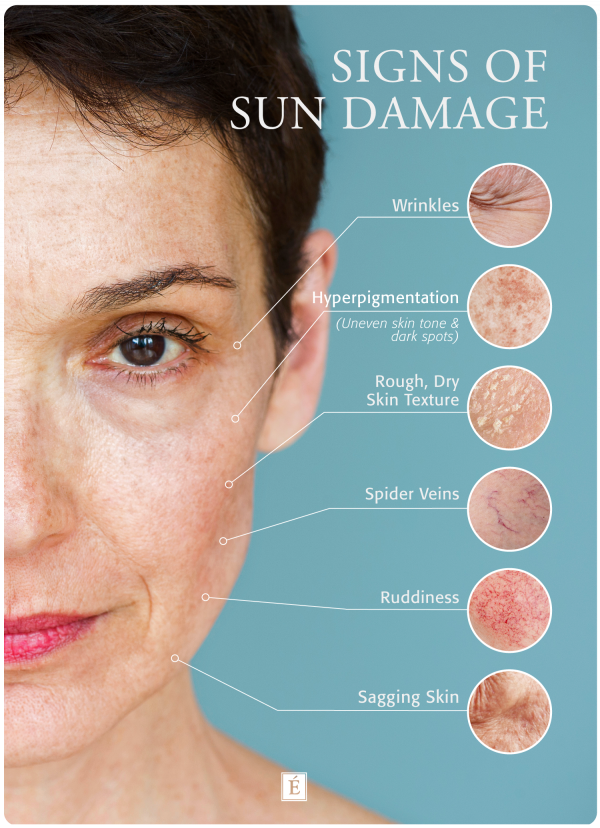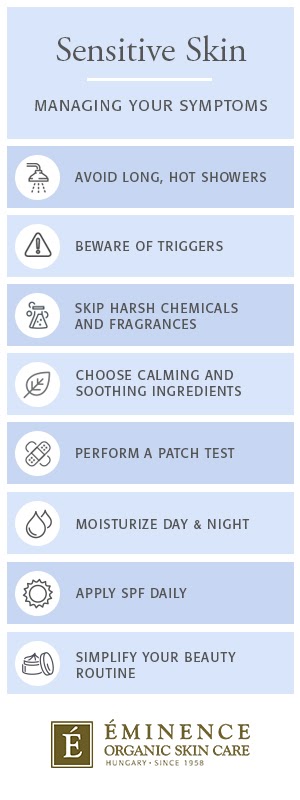What Is The Effect Of Blue Light On The Skin?
Whether we're protecting our skin from the sun or protecting it from the aging effects of gravity, it sometimes feels like our complexion is being attacked on all sides. And with the increase in screen time due to the pandemic, we can add another attacker to the list: blue light. This type of harmful light comes towards us from multiple sources – not only does blue light come from the sun, but also from the screen of your cell phone, computer, television, and most lightbulbs. In short, our skin is exposed to a potential source of damage for a large portion of your day each day. Here you will find all the information about whether artificial blue light is harmful and what you can do about it.

What is blue light?
Blue light is simply light on that blue end of the visible light spectrum, which is within the wavelength of 400 to 450 nanometers. This is a short wavelength that has a higher energy output and, unfortunately, can cause greater damage to the skin. As mentioned earlier, blue light is not only found in sunlight, it is equally important that it emanates from electronic devices that are now integrated into most people's daily lives. According to Brian Goodwin, Eminence Organics international trainerWe are typically exposed to blue light between your mobile phone and the computer screen for more than 13 hours a day. Due to the long daily exposure times and the high potential for skin damage, blue light could be the number one enemy of our skin health.

What do we know about the dangers of blue light?
Blue light first got a bad rap when people noticed that it was related to poor quality sleep. Late night hours in bed scrolling through your phone resulted in restless nights, and scientists soon discovered why. According to Harvard Health, blue light at night, suppresses the secretion of melatonin, the hormone that affects the circadian rhythms that plan your sleep / wake cycle. With an out of whacked sleep cycle, many people don't get enough sleep and are open to health problems like depression, diabetes, and cardiovascular problems.
A good night's sleep isn't the only thing at risk. Exposure of the eyes to blue light was one of the other potential problems that professionals first pointed out. The cornea and lens do not filter out blue light, so it goes straight to the fundus. And a A study by the University of Toledo found that blue light "converts vital molecules in the retina of the eye into cell killers that damage the retina," leading to conditions like macular degeneration. Although the experiments were only performed in a laboratory and not on eyes, the potential for eye damage from blue light appears problematic.
Why is blue light harmful to your skin?
With blue light making waves in sleep and eye health, it's no surprise that potentially damaging effects on skin health have also been discovered. in contrast to others Environmental stressors for the skin – like sunlight and UV rays – there is no heat, no burns. However, don't let the lack of immediate effects fool you. Visible light, especially in the blue wavelength, has become a hot topic in skin care as there is increasing evidence to support its contribution to photoaging, including wrinkles, worsening skin laxity, and hyperpigmentation.
Visible light, especially in the blue wavelength, has become a hot topic in skin care as there is increasing evidence to support its contribution to photoaging, including wrinkles, worsening skin laxity, and hyperpigmentation.
Inflammation and free radicals
Academic studies like that The 2010 Journal of Investigative Dermatology found that exposure of the skin to the blue light we get from the sun causes more pigment, redness, and puffiness than when the same person's skin was exposed to similar UVA rays. This is supported by a 2015 study published in Oxidative Medicine and Cellular Longevity, which concluded that exposure to blue light can stimulate the production of free radicals in the skin, a major cause of premature visible signs of aging. The free radicals generated create unstable molecules, which leads to inflammation that attacks the cells.
So if we know that blue light is dangerous to our skin, how does it actually cause harm and what are the effects? When blue light puts pressure on the skin, it reacts with inflammation, which leads to swelling and redness. It also creates free radicals that damage the skin by damaging DNA and leading to weakened collagen and elastin. With compromised collagen and elastin, the skin becomes uneven, creating lines and wrinkles. Free radical damage also cause it Hyperpigmentation which leads to more signs of aging like dark spots. In summary, Brian outlines our body's alarming reaction to blue light: “The skin reacts by immediately protecting itself with inflammation that causes signs of swelling and redness. This triggers a chain of other events that cause symptoms in the skin, such as: B. Hyperpigmentation and a faster breakdown of collagen and elastin. "
How do we protect our skin when we sit in front of our devices for most of the day?
Cocoa seed extract: the blue light skin protection
Researchers have found that concentrated natural cocoa seed extract protects the skin from blue light damage by blocking the skin's blue light receptor cells. A decrease in cell activity in these blue light receptors decreases free radical damage and increases collagen and elastin production in the skin.
This unique extract contains three beneficial, naturally occurring components. These are peptides, saccharides and antioxidants that address the negative effects of blue light such as collagen breakdown, elastin breakdown and hyperpigmentation. Peptides in cocoa seed extract are a chain of amino acids that protect the skin from blue light stress and promote collagen and elastin strengthening. Polyphenols are groups of organic compounds that have antioxidant properties for the skin and protect the skin from the free radicals produced by blue light. After all, saccharides are sugars that draw water into the skin. They help prevent and treat the possible dehydration caused by blue light.
At Eminence Organics, we have formulated a range of all SPF mineral moisturizers that are silicone-free, use non-nano-zinc oxide technology, and help with environmental stressors. From our newest line of SPF moisturizers, one is particularly useful for improving the appearance of skin exposed to blue light – The Lilikoi Daily Defense Moisturizer SPF 40. This lightweight daily moisturizer contains cocoa seed extract, Satsuma mandarin peel and SPF 40, all mineral protectants to protect the skin from blue light stress and pollution.
What is most alarming about blue light? Let us know in the comments below or share with us on social media. If you want lto earn You can find more information about our SPF moisturizers in our spa locator. There you will find an Eminence Organics Spa partner near you.
Product selection

Lilikoi Daily Defense Moisturizing Cream SPF 40
VIEW PRODUCT
This post was originally published in March 2019 and has been updated for accuracy and completeness.


































